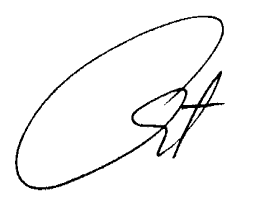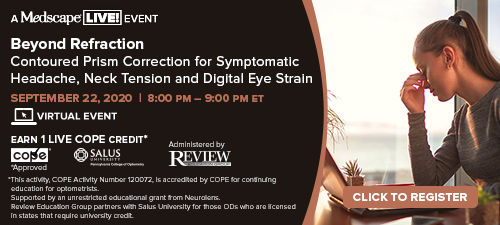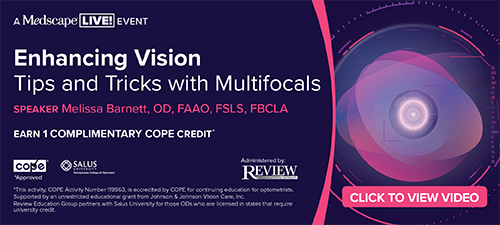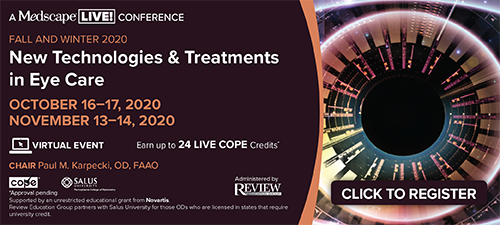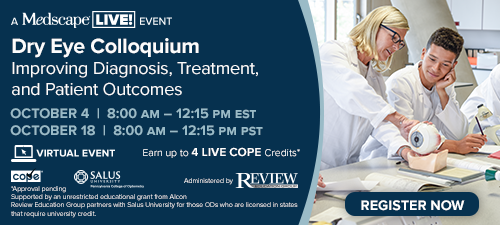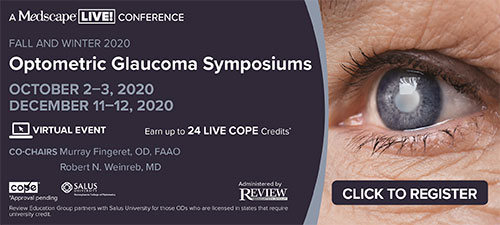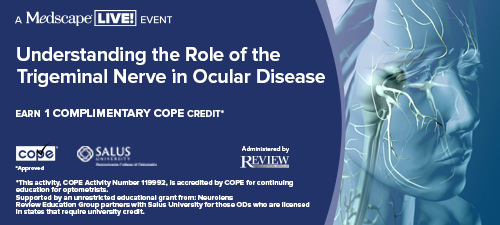
A
weekly e-journal by Art Epstein, OD, FAAO
Off the Cuff: Why Dry Eye is So Confusing
With such intense interest and so many experts you would think that by now, just about everyone would have completely figured out dry eye. Despite all of the activity, it remains one of the most confusing and overcomplicated areas in eye care. I know this because I respond to numerous questions from colleagues on a very regular basis. While I don’t mind this, it is clear that there is more misunderstanding than understanding in an area that should be a clinical centerpiece of our profession. Like a big jigsaw puzzle with too many pieces that don’t quite fit together, making new pieces isn’t a strategy likely to result in successfully solving the puzzle. The simple truth and the distressing reason why dry eye remains so confusing for so many, is that we intentionally make it so. Please tell me what a lacrimal functional unit is and why it becomes dysfunctional? Why are we still so focused on lacrimal insufficiency when we know that most cases of dry eye are caused by MGD and lipid insufficiency? Where does MGD fit into the dry eye discussion if dry eye is primarily an inflammatory disease? And if dry eye is an inflammatory disease, why doesn’t it always respond to topical steroids, which effectively control just about every other form of eye inflammation? But wait, there’s more. What exactly is evaporative or desiccating stress? Our bodies are made mostly of water that’s trapped in a comparatively dry, often challenging, environment. Our skin serves as a lipid-based wet suit to prevent dehydration and brilliantly leverages evaporation as a cooling mechanism. We are intentionally designed to function that way. Why would the eyes be any different? Considering how essential they are for survival, it is virtually impossible to imagine that the eyes weren’t engineered to exist and even thrive in a state of constant evaporative stress. What this tells us is that dry eye is actually a lot more complex then we imagine. There are many pieces still missing from this magnificent jigsaw puzzle and even more that don’t quite fit. Over the past few years, as I have focused intensely on dry eye, I’ve been fortunate to have figured out more and more of this puzzle. The pieces are all starting to fit together, and I am seeing things with increasing clarity. In a future column I will explain why homeostasis is the unifying theory of dry eye and best explains how the body manages its most precious sense.
|
|||||
 |
||
| Aesthetics of Iris Reconstruction with a Custom-made Artificial Iris Prosthesis | ||||
Patients with large iris defects not only suffer from functional disadvantages but also from aesthetic limitations. The aim of this study was to evaluate the aesthetic outcome of iris reconstruction using an artificial iris (AI). In this study, 82 eyes of 79 consecutive patients with mostly traumatic partial or total aniridia that underwent iris reconstruction surgery using a custom-made silicone AI (HumanOptics). Pre- and postoperative photographs of 66 patients were analyzed subjectively and objectively. Subjective evaluation was based on questionnaires. Objective evaluation included measurement of pupil centration and iris color analysis. Averaged hues from iris areas were transferred to numerical values using the LAB-colour-system. Single parameters and overall difference value (ΔE) were compared between AI and remaining iris (RI), as well as AI and fellow eye iris (FI). Patients, eye doctors and laymen rated the overall aesthetic outcome with 8.9 ±1.4, 7.7 ±1.1 and 7.3 ±1.1 out of 10 points, respectively. Mean AI decentration was 0.35 ±0.24 mm. Better pupil centration correlated with a higher overall score for aesthetic outcome. The AI was on average 4.65 ±10 points brighter than RI and FI. |
||||
SOURCE: Yildirim TM, Khoramnia R, Masyk M, et al. Aesthetics of iris reconstruction with a custom-made artificial iris prosthesis. PLoS One. 2020;15(8):e0237616. 2020; Aug 13. [Epub ahead of print]. |
||||
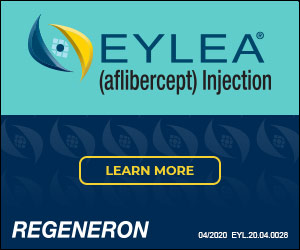 |
||
| Digital Technology, Tele-medicine and Artificial Intelligence in Ophthalmology: A Global Perspective | ||||
The simultaneous maturation of multiple digital and telecommunications technologies in 2020 has created an unprecedented opportunity for ophthalmology to adapt to new models of care using telehealth supported by digital innovations. These digital innovations include artificial intelligence (AI), fifth-generation (5G) telecommunication networks and the Internet of Things (IoT), creating an interdependent ecosystem offering opportunities to develop new models of eye care to address the challenges of COVID-19 and beyond. Ophthalmology has thrived in some of these areas partly due to its many image-based investigations. Telehealth and AI provide synchronous solutions to challenges facing ophthalmologists and healthcare providers worldwide. This article reviewed how countries across the world have utilized these digital innovations to tackle diabetic retinopathy, retinopathy of prematurity, age-related macular degeneration, glaucoma, refractive error correction, cataract and other anterior segment disorders. The review summarized the digital strategies that countries are developing and discussed technologies that may increasingly enter the clinical workflow of ophthalmologists. Furthermore, as countries around the world have initiated a series of escalating containment and mitigation measures during the COVID-19 pandemic, the delivery of eye care services globally has been significantly impacted. As ophthalmic services adapt and form a "new normal," the rapid adoption of some of telehealth and digital innovation during the pandemic was also discussed. Finally, challenges for validation and clinical implementation were considered, as well as recommendations on future directions.
|
||||
SOURCE: Olivia Li JP, Liu H, et al. Digital technology, tele-medicine and artificial intelligence in ophthalmology: A global perspective. Prog Retin Eye Res. 2020; Sep 5. [Epub ahead of print]. |
||||
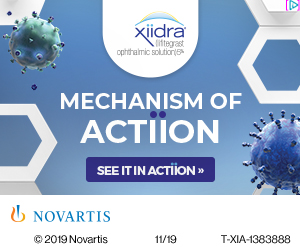 |
||
| Asymmetry Analysis of Optical Coherence Tomography Angiography Macular Perfusion Density Measurements in Preperimetric and Perimetric Glaucoma | ||||
Macular retinal layer thickness asymmetry indices, particularly for the ganglion cell layer, are promising early indicators of glaucomatous damage. Investigators evaluated macular perfusion density asymmetry (MPDA) among normal, preperimetric glaucoma (PPG) and perimetric glaucoma (PG) eyes, and tested the performance of MPDA in differentiating between control and glaucoma eyes with or without visual field (VF) defects. In this study, 116 eyes (39 normal, 27 PPG and 50 PG eyes) with optical coherence tomography angiography images of the macula were analyzed. No significant difference was found in outer and inner MPDA between the control and PPG groups. However, outer MPDA was significantly higher in the PG group than in the PPG group. Asymmetry of perfusion density and structural parameters were compared, and no significant difference was found between controls and glaucoma patients. Outer MPDA had significantly higher discrimination ability between PPG and PG than did macular ganglion cell layer-inner plexiform layer thickness asymmetry. In conclusion, investigators found that the discriminant capability of MPDA for discriminating between glaucoma patients with and without VF defects was significantly higher than that of structural asymmetry. They added that MPDA may be helpful in monitoring glaucoma progression in clinical practice. |
||||
SOURCE: Chang PY, Wang JY, Wang JK, et al. Asymmetry analysis of optical coherence tomography angiography macular perfusion density measurements in preperimetric and perimetric glaucoma. Sci Rep. 2020; Sep 8. [Epub ahead of print]. |
||||
| News & Notes | ||||||||
| Topcon Announces the US Launch of Aladdin-M Topcon Healthcare launched its new Aladdin-M instrument to the US market. Aladdin-M combines corneal topography, pupillometry and optical biometry to enable objective measurement of corneal curvature, pupil dynamics and axial length metrics. The device provides tools to support myopia management in addition to features for keratoconus screening and contact lens fitting. Learn more. |
||||||||
|
||||||||
| Prevent Blindness Launches “Glaucoma Community” Prevent Blindness and Responsum Health launched The Glaucoma Community, a new platform that can be accessed for free via web browser or mobile app, to educate the public on glaucoma, and offer patients and caregivers resources. The Glaucoma Community was made possible by a grant from The Allergan Foundation. Special features include: a personalized newsfeed, a community chat, a moderated social wall, automatic translation into seven languages; and Patient One-Sheet, which allows patients to collect, maintain and print their key medical information in a secure format. Learn more. |
||||||||
|
||||||||
| Bausch + Lomb Recognized for Sustainability Leadership Bausch + Lomb’s ONE by ONE Recycling Program was recently recognized as part of the Business Intelligence Group's 2020 Sustainability Awards in the category of Sustainability Leadership Award (Organization). This honor recognizes companies making sustainability an important part of their business practice. Read more. |
||||||||
|
||||||||
|
||||||||
|
||||||||
|
||||||||
|
||||||||
|
Optometric Physician™ (OP) newsletter is owned and published by Dr. Arthur Epstein. It is distributed by the Review Group, a Division of Jobson Medical Information LLC (JMI), 19 Campus Boulevard, Newtown Square, PA 19073. HOW TO ADVERTISE |

